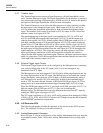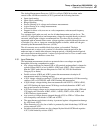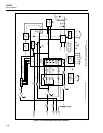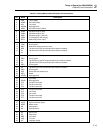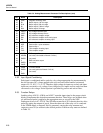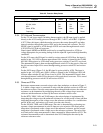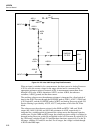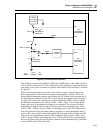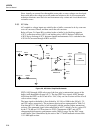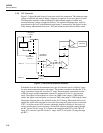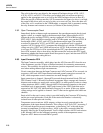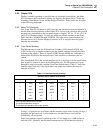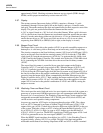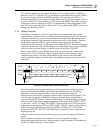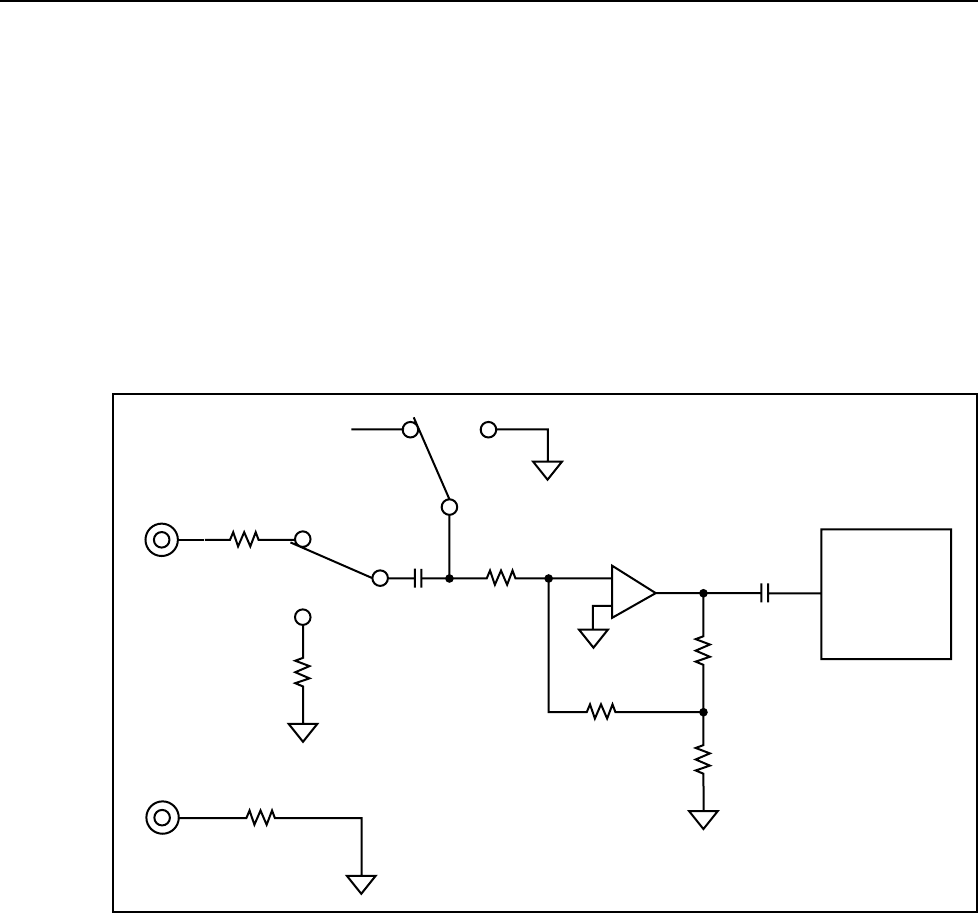
HYDRA
Service Manual
2-24
Since virtually no current flows through the sense path, no error voltages are developed
that would add to the voltage across the unknown resistance; this 4-wire measurement
technique eliminates user lead-wire and instrument relay contact and circuit board trace
resistance errors.
2-56. AC Volts
AC-coupled ac voltage inputs are scaled by the ac buffer, converted to dc by a true rms
ac-to-dc converter, filtered, and then sent to the a/d converter.
Refer to Figure 2-6. Input HI is switched to the ac buffer by dc-blocking capacitor
A3C31, protection resistor A3R11, and latching relay A3K15. Resistor A3R44 and
A3K15 act to discharge A3C31 between channel measurements. LO is switched to the
A3U8 A/D Converter through A3R34 and S18.
A3K15
INPUT LO
A3R43
A3U7
+
_
A3Z3
1.111M
A3Z3
115.7
A3Z3 FEEDBACK
RESISTOR
A3Z3
2.776k
RMS
COVERTER
A3C15
&
A3C16
A3R11
A3U6
INPUT HI
A3R44
A3C31
s6f.eps
Figure 2-6. AC Buffer Simplified Schematic
JFETs A3Q3 through A3Q9 select one of the four gain (or attenuation) ranges of the
buffer (wide-bandwidth op-amp A3U7.) The four JFET drive signals ACR1 through
ACR4 turn the JFETs on at 0V and off at -VAC. Only one line at a time will be set at 0
volts to select a range.
The input signal to the buffer is first divided by 10, 100, or 1000 for the 300 mV, 3V,
and 30V ranges, respectively. The resistance ratios used are summarized in Table 2-6.
Note that the 111.1-kΩ resistor is left in parallel with the smaller (higher attenuation)
resistors. The attenuated signal is then amplified by A3U7, which is set for a gain of 25
by the 2.776-kΩ and 115.7Ω resistors in A3Z3. Components A3R27 and A3C23
compensate high-frequency performance on the 300 mV range. For the 300V range,
overall buffer gain is determined by the ratio of the 2.776-kΩ feedback resistor to the
1.111-MΩ input resistor.



